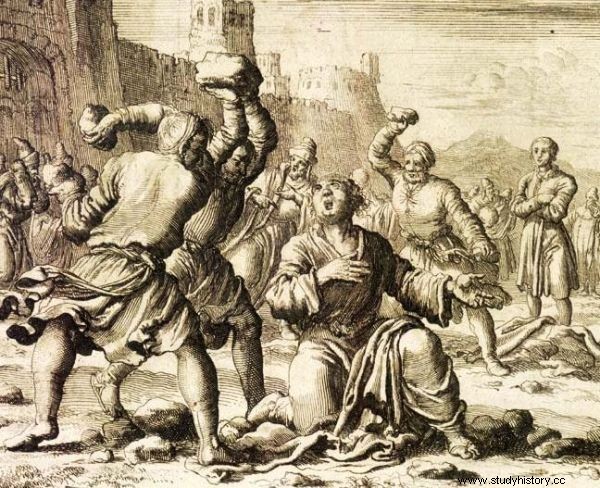If you happen to be deformed, lame and infirm and your main way of life is begging, don't worry - the ancient Greeks already have a job for you.
You have all the necessary qualifications to become pharmakoi. Don't get used to it though, because this "job" will probably kill you.
The end justifies the means
Pharmakos which is a rite at the center of which was pharmakoi , they were held to cleanse the entire city. If it was to have a positive effect, it was only through the appropriate sacrifice. Bloody best. In this case, the end justified the means, because two people were chosen to represent the rest of the inhabitants. Everyone was thought of here - one man was killed for the intention of women, the other - for men. Long live (or die?) Solidarity!
Let's get to the heart of the matter. A less macabre version of the ritual assumed the expulsion of pharmakoi from city. If, however, the circumstances dictated to go further, the victims were stoned to death or thrown off cliffs.
This is a good time to perform the pharmakos rite there were major festivals such as thargelia Athenian. Also during cataclysms or plagues, attempts were made to appease the deities in this bloody way.
For the ancient Greeks, it was like baking two birds with one stone. First, in their opinion, they pacified the hostile forces, second - got rid of the uncomfortable elements of their ideal poleis .

Stoning outside the city walls. Such a fate awaited at least some Pharmakoi.
Who could be the victim? From beggars to thieves to political prisoners. In short, the very "elite" of the society.
If you die, do it with style
Unfortunately, one of the candidates for a future victim was Hipponacus of Ionia. Fortunately for us - he described it in detail, presenting the everyday life of the 6th century BC. In his person you can find all the traits that a potential victim had - from deformity to politically inconvenient views. Additionally, he committed several offensive poems. In short, the perfect candidate!
Painful testicles
As you can guess, Hipponacus was not particularly pleased with the honor he received. Thanks to his texts, however, it is known that pharmakoi he received dried figs and dates, bread and cheese. They lived for a time at the expense of the society for which they would later be sacrificed. They received new garments and sweets, i.e. products that were not normally available to them, since they came from the poorest layers.
On the day of the ceremony, they were presented to the public. It wasn't particularly traumatic. It was worse with the ritual preceding the main ritual. In order to release all vital and fertile forces, the poor people were beaten on the genitals.

Human sacrifice was no stranger to the ancient Greeks. Above - a fresco from Pompeii depicting the sacrifice of Iphigenia.
Death outside the walls
Once all the preparations had been completed, a bloody ending followed. As long as the presentation of the still living pharmakoi took place in the center of polis he was murdered outside the city walls.
It should be noted that human sacrifice in ancient Greece was a marginal phenomenon. The ritual, even if it was not uncommon, only sometimes ended with the death of the people's chosen. But it was better not to take any chances anyway.
Conclusion for posterity - it does not pay off to be ugly. At least it doesn't pay off in the long run.
